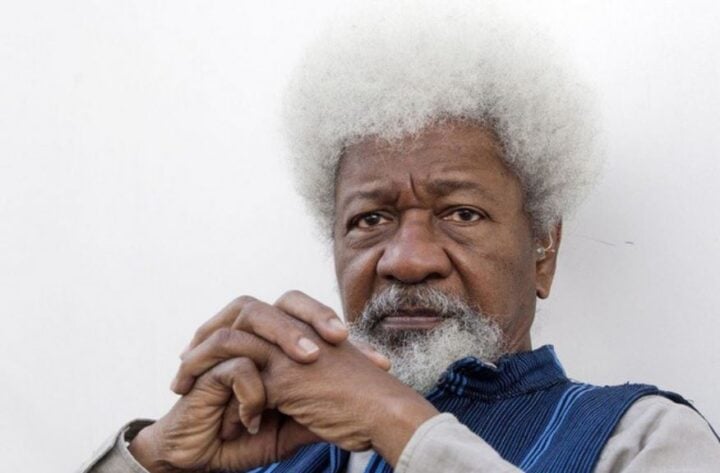The age of physical AI: Inside P-1's attempt to build an engineering brain | IBM
Artificial intelligence has taught machines to write prose and generate pictures. Now, a new frontier is emerging, one where software doesn’t just interpret the world, but helps build it. This is the rise of physical AI: systems trained not on words or images, but on the raw constraints of the real world, like friction, heat, vibration and force. One of the leaders of this movement is a new startup called P-1 AI.
Founded by aerospace executive Paul Eremenko, Adam Nagel and DeepMind alum Aleksa Gordić, P-1 is developing a machine called Archie, a digital apprentice designed to collaborate with engineers on complex design tasks.
Archie is not designed to answer trivia or write summaries. It is being trained to reason through multiphysics systems, explore tradeoffs and eventually help design real-world machines, from HVAC systems to spacecraft. Speaking with IBM Think, Gordić envisions a future where tools like Archie might even help design speculative megastructures, such as starships.
“To make progress in engineering, you need something more structured, more grounded in physics,” Gordić says.
NVIDIA CEO Jensen Huang has emphasized the importance of this direction, calling physical AI the new “industrial revolution” in several recent talks. He has also described physical AI as the driving force behind the company’s future, emphasizing that the fusion of generative models with robotics and simulation will enable machines to understand and navigate the real world with unprecedented capability. Accordingly, NVIDIA is increasingly optimizing its hardware platforms not only for training large language models (LLMs), but also for physical reasoning tasks in domains like autonomous driving, robotics and digital twins.
P-1’s platform utilizes reinforcement learning and graph neural networks to generate synthetic datasets, model design variations and simulate the behavior of physical systems—which it does in milliseconds, not hours.
Instead of replacing CAD tools or solvers, Archie is being trained to work with them. It selects the right tool for the task and uses it the way a junior engineer might. Traditional simulation workflows can take hours or even days to test a single design. Archie uses graph neural networks to approximate those simulations in milliseconds, enabling much faster iteration. According to Gordić, the goal is not just speed but to mirror how engineers actually think. “It’s about knowing what to give up in order to move forward,” he says. Real-world design, he adds, is often a negotiation between competing constraints rather than a simple optimization problem.
The company’s initial focus is pragmatic, Gordić says. With data centers consuming more power and generating more heat than ever, P-1 is deploying Archie in the industrial cooling sector, where it can help design more efficient HVAC systems. “It’s a domain with clear physical constraints and commercial urgency,” Gordić says.
The system is already being trained on component-level models of fans, compressors and heat exchangers. And rather than simulate airflow in an abstract sense, Archie is learning how to make the choices a real design engineer might make when balancing airflow efficiency with cost, noise and footprint.
IBM Staff Research Scientist Johannes Jakubik sees parallels between Archie and the work being done at IBM Research. He tells IBM Think in an interview that models like TerraMind, a foundation model developed for satellite imagery and remote sensing, are designed to close data gaps in Earth observation by generating synthetic images where real ones are missing. “Instead of just interpreting data, we’re developing models that can reason through missing information and simulate what we couldn’t observe directly,” he says.
He points to TerraMind’s ability to translate radar data into synthetic optical imagery as a critical step toward multimodal AI systems that understand spatial context. “These systems are not just generating pictures,” he says. “They’re performing a kind of physical inference.”
Jakubik also highlights the importance of domain-specific adaptation. “We’ve found that training models with a deep understanding of the physics behind a problem leads to more stable and reliable predictions,” he says. “It’s not enough to scale models; we have to make them intelligent about the world they operate in.”
Cooling systems are only the beginning. P-1’s ambition, Gordić says, is to expand Archie’s capabilities across increasingly complex product domains, from electric vehicles to aerospace. To that end, the company is currently prototyping modules that could support structural, thermal and electromagnetic design within the same agent framework.
The long-term vision is to build a general-purpose AI that can collaborate meaningfully in the creation of technologies that do not yet exist. “We’re not trying to build an AI that replaces engineers,” Gordić says. “We’re trying to build one that helps them explore more possibilities.”
To do that, P-1 has had to overcome one of the field’s most notorious bottlenecks: the scarcity of usable training data in engineering. Unlike natural language datasets, engineering datasets are rarely public and typically fragmented across proprietary silos. Gordić notes that even aircraft design—one of the most well-documented fields—has relatively few accessible data points.
P-1’s answer is to generate synthetic data using physics-informed sampling strategies. The idea is to build datasets that span not just existing solutions, but the negative space around them—regions of design space that are usually underexplored or dismissed. “Sometimes the most interesting designs are the ones that initially look wrong,” Gordić says.
Jakubik echoes this sentiment. “One of the most exciting parts of working with AI in the physical sciences is its ability to identify edge cases,” he says. “These are areas humans often overlook, because they lie outside conventional heuristics.”
He adds that AI can test more designs in less time, reducing reliance on intuition. “In complex systems, we often make decisions based on simplifications,” he says. “AI gives us a way to challenge those simplifications with real data and simulated outcomes.”
At IBM, researchers are also collaborating with climate and weather models, such as Prithvi WxC, which the company developed in partnership with NASA. Jakubik explains that this model uses transformer-based architectures to analyze hundreds of variables in parallel. “It allows us to model the evolution of extreme events with significantly less compute than traditional simulation methods,” he says.
Jakubik emphasizes that AI systems are designed to augment human capabilities, not supplant them. “AI has reached the point where it can augment scientific and engineering discovery, but the framing of the problem still has to come from domain experts,” he says.
He believes AI is especially powerful in early-stage design and hypothesis testing. “These are the moments when uncertainty is highest and the cost of getting things wrong is lowest,” he says. “AI can offer a broader range of initial ideas and stress-test them faster than a human team working alone.”
Another company pursuing physical AI is Lila Sciences, a biotech startup spun out of Flagship Pioneering. Lila is developing autonomous laboratories guided by AI systems that can generate hypotheses and run thousands of experiments in parallel. With USD 200 million in funding and a goal of building what it calls “scientific superintelligence,” Lila’s platform recently wowed the scientific community by uncovering novel catalysts for green hydrogen production in just four months—a process previously estimated to take years.
Gordić, Nael and Eremenko’s path to founding P-1 was shaped by years in high-stakes research environments. Eremenko led DARPA’s Tactical Technology Office and served as CTO at both Airbus and United Technologies. Gordić spent years at DeepMind and Microsoft, focused on the intersection of machine learning and structured reasoning.
They saw a gap in the market: most general-purpose language models were poorly suited to engineering, which demands not just syntax and semantics, but also causal inference and adherence to laws of physics.
“Large language models are great for summarizing documents,” Gordić says. “But to design a rocket, you need to understand how propellant flow interacts with chamber pressure. That’s a different level of reasoning.”
P-1 has raised USD 23 million in seed funding from Radical Ventures, Village Global and investors from OpenAI and Google. It is hiring aggressively and expects to begin rolling out industry pilots within the year. The company’s current staff includes alumni from the aerospace, automotive and advanced computing sectors.
Whether that effort ultimately reshapes engineering workflows, or falters under the complexity of real-world constraints, remains to be seen.
“We’re at the very beginning of what physical AI can do,” Gordić says. “But if we get it right, this could be the foundation for how we design everything in the future.”











